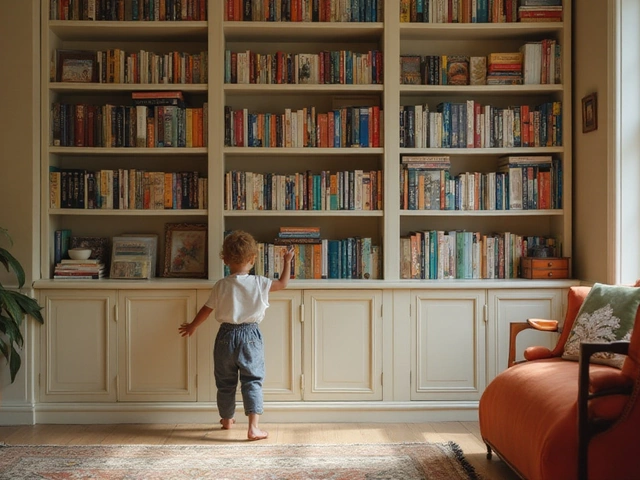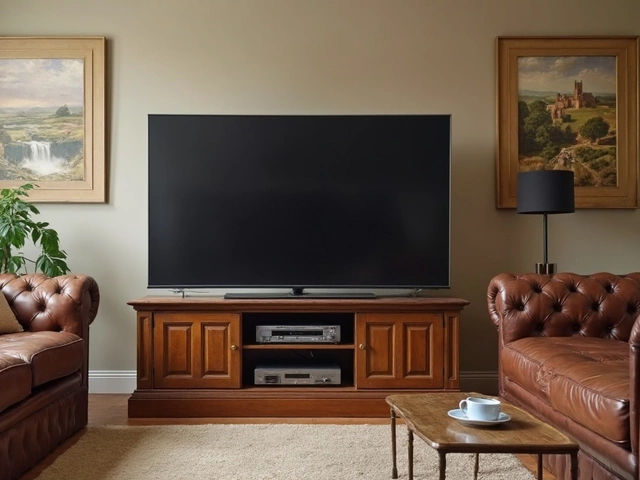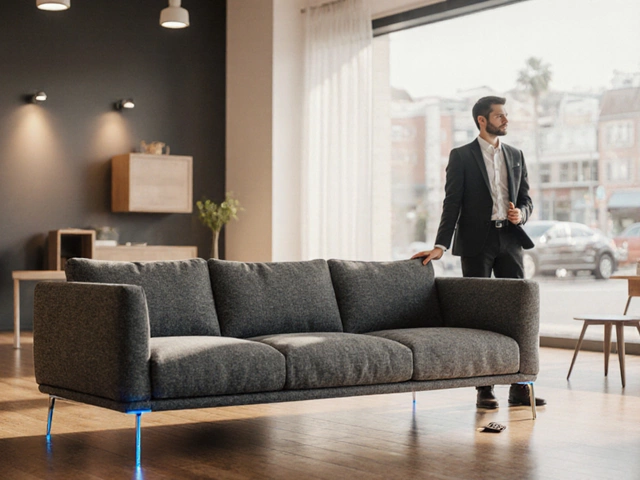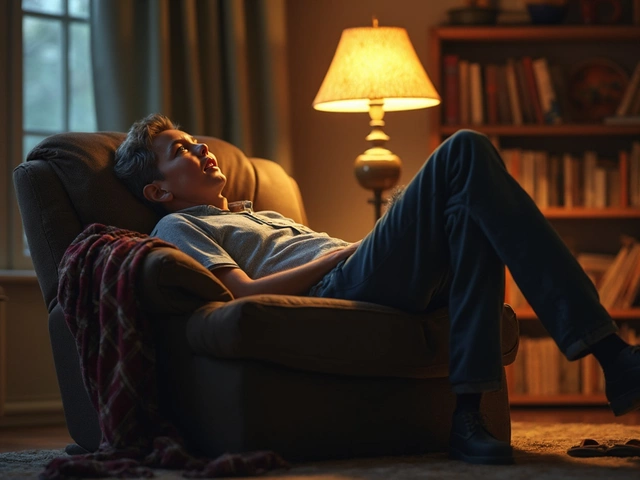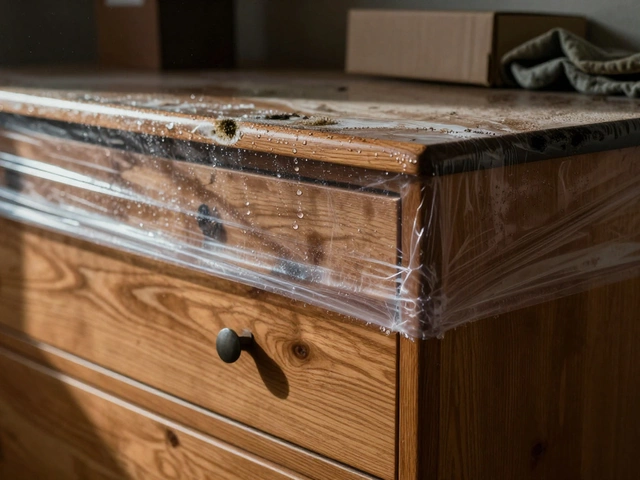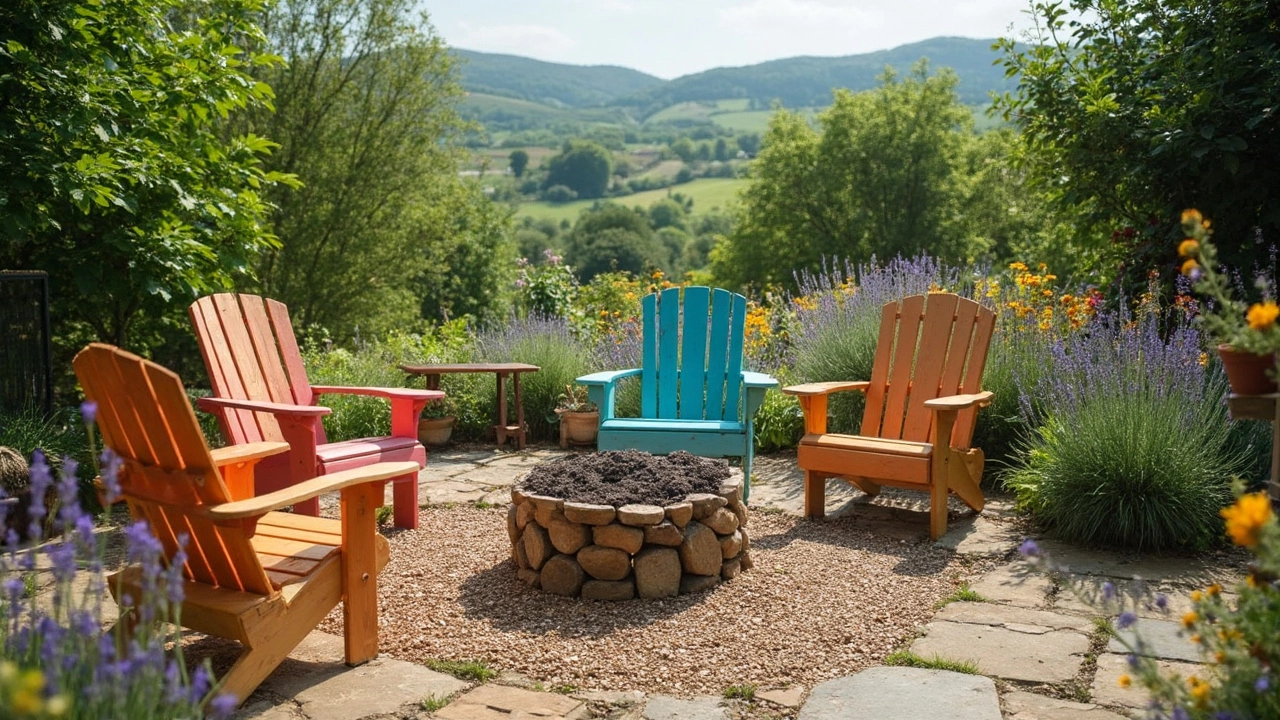 21
Mar,2025
21
Mar,2025
Setting up a patio on grass doesn't have to cost an arm and a leg. In fact, with the right materials and a bit of elbow grease, you can create a stylish outdoor space on a shoestring budget. The trick? It's all about making smart choices and focusing on practicality.
First things first, you need to have a budget in mind. This will guide your decisions and help you pick materials that fit both your style and wallet. Speaking of materials, you’ve got options. Gravel is an excellent choice for a clean look and won’t drain your funds. If you're handy with tools, consider using reclaimed pallet wood for a rustic touch.
If you're worried about complications, don't stress. Follow a step-by-step process, and you'll see progress in no time. Before getting started, ensure the ground is flat and free of debris—this will set a good foundation for your patio.
- Understanding Your Budget
- Choosing Materials Wisely
- Step-by-Step Patio Installation
- Enhancing Your Patio Aesthetically
- Common Mistakes to Avoid
- Long-term Maintenance Tips
Understanding Your Budget
When you're dreaming about that perfect patio, the first step is getting real about your finances. Crafting a budget-friendly patio requires knowing exactly how much you're willing to spend upfront and sticking to it. It's easy to get carried away with fancy ideas, but remember, your goal is creating a functional space without burning through your savings.
Start by asking yourself: What can I realistically afford? Break down your total budget into categories like materials, tools, and any potential labor costs. Prioritize your expenses. For instance, durable materials are a must, while flashy decorations can wait.
Material Matters
Choosing the right materials is key to staying within your budget. Generally, some of the cheapest patio ideas involve using gravel or basic concrete pavers. Gravel is by far the most economical, with prices ranging from $15 to $75 per ton, depending on quality and color.
Consider alternative materials like pallet wood, which can often be sourced for free from local businesses. Just ensure any wood used is adequately treated to withstand outdoor conditions.
Do-It-Yourself vs. Hiring Help
If you have some DIY skills, you can save loads by handling the labor yourself. DIY projects not only reduce costs but also allow for personalization that reflects your taste and creativity. However, for those not so confident with tools, consider hiring part-time help for specific tasks—this option will save time without a full-blown contractor expense.
| Budget Area | Estimated Cost (AUD) |
|---|---|
| Materials (Gravel) | 150 - 300 |
| Tools Purchase/Rental | 100 - 250 |
| Optional Labor | 200 - 400 |
The key to a successful cheap patio project is careful planning and creativity. When you align your vision with a practical budget, you'll pave the way to a beautiful outdoor space that doesn't cost the Earth.
Choosing Materials Wisely
When building a patio on grass without spending a lot, picking the right materials is your first essential move. It's like being on a racing game, you want the best parts without maxing out your budget.
Gravel: The Budget-Friendly Classic
Gravel is often the go-to choice when looking for something inexpensive and easy to work with. It's durable, drains water well, and offers a neat finish. A simple few inches thick layer does the trick. A pro tip? Opt for crushed stone as it stays in place better than smooth pebbles.
Concrete Pavers: Balancing Cost and Durability
Pavers are the middle ground in terms of cost. They’re relatively easy to install, especially if you choose the interlocking kind. When installing, a level base is crucial to avoid pesky trip hazards. Not only are they functional, but they also come in a range of styles and colors so you can get creative!
Reclaimed Materials: Go Green and Save Money
Using reclaimed or recycled materials like bricks or stones is another way to save cash and be environmentally friendly. It adds character and a rustic vibe to your patio. Just make sure everything you use is in good condition to avoid extra repair work down the track.
Pallet Wood: Rustic and Wallet-Friendly
If you like the natural look, pallet wood could be your new best friend. It’s cheap (sometimes free), easy to find, and great for a DIY patio. Simply ensure the wood is treated and sealed, as unprotected wood can rot sitting on damp grass fields.
Remember, the best choice will depend on your style preference, the space available, and of course, how much time you're willing to put in. Whichever way you go, imagine yourself lounging on your cozy new patio, satisfied with the fantastic space you've created without skimping on style!
Step-by-Step Patio Installation
Building your patio can be a fun DIY project, especially if you're keen on staying budget-friendly. Here's a practical guide you can follow, so you can enjoy your new outdoor space.
1. Mark Your Area
Start by deciding where you want your patio. Using a string or garden hose, outline the area you plan to convert into a patio. This visual boundary helps to keep things neat and on track.
2. Prepare the Ground
Remove grass and any debris from the outlined area. You want your surface to be as smooth as possible, so the materials settle correctly. Use a shovel to level out the earth, ensuring you have a solid foundation.
3. Add a Base Layer
Here’s where the magic starts. Begin with a layer of landscape fabric to prevent weeds. Next, lay down gravel. This base helps with drainage and provides stability. Spread the gravel evenly, aiming for about 4-6 inches in depth.
4. Choose Your Materials
Decide on the material for your patio surface. Budget-friendly options include gravel for a minimalist look or pallet wood for a more rustic vibe. If you opt for wooden pallets, make sure they are clean and steady.
5. Install the Surface
- If using gravel, lay it out across your base evenly. Consider adding a timber edge to keep it contained.
- For pallet wood, arrange the pieces snugly together. Securely attach them using nails or screws for added sturdiness.
6. Compact and Finalize
Once your chosen materials are laid down, use a tamper tool over the surface. This ensures everything stays in place. For gravel, you might need to add more and repeat until it feels compact and secure.
Cheap patio ideas aren't just about cutting costs. They’re about making smart use of resources. A DIY patio might not just save you money, but it could also add a personal touch that pre-made options might lack.
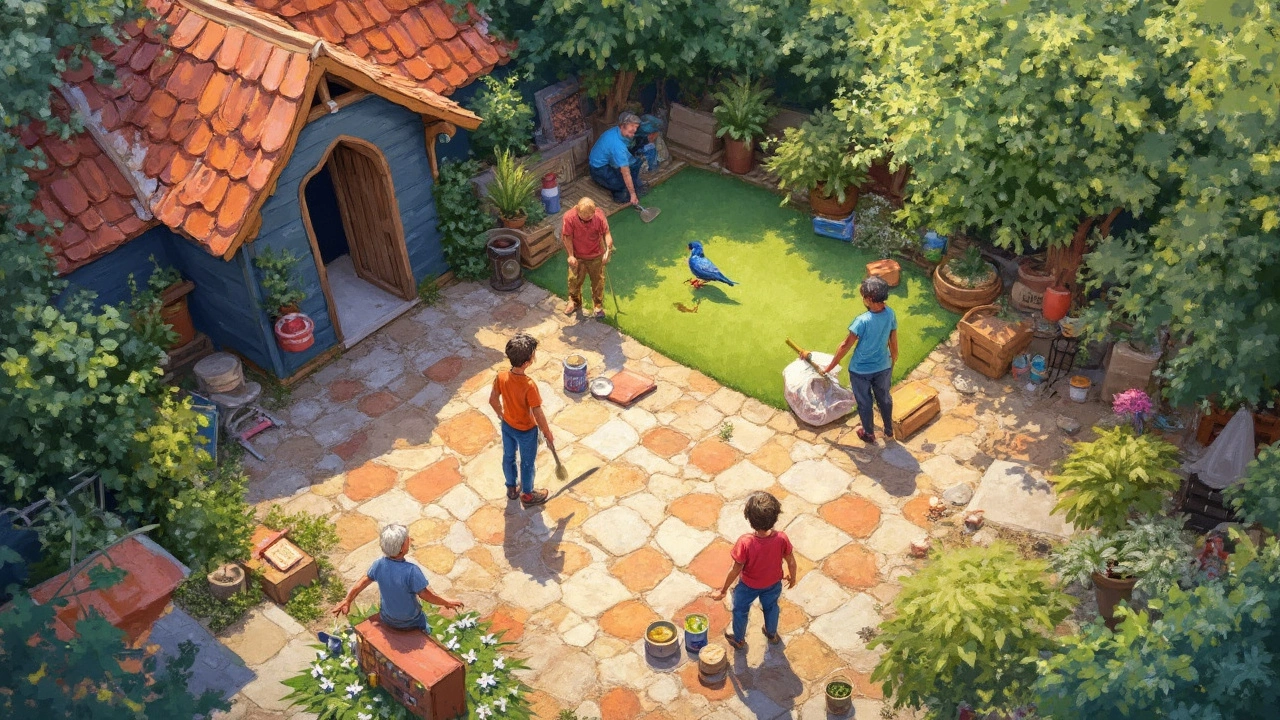
Enhancing Your Patio Aesthetically
So, you've got the basic structure of your patio ready, but how do you take it from functional to fabulous? It's all about the little touches that bring everything together, making your outdoor space a true extension of your home.
Adding Some Greenery
Nothing says inviting like a burst of nature. Potted plants are an easy win. You can choose a mix of sizes, colors, and textures to keep things interesting. Not only do they add beauty, but they also up the relaxation factor. If you're feeling adventurous, try vertical gardens—these can save space and look super cool.
Lighting Matters
Think about it: when the sun goes down, you want your patio to still look amazing. String lights are popular because they're cheap and instantly cozy up the space. Solar-powered lights are another great option—they’re eco-friendly and won’t add to your electric bill.
Furniture on a Dime
When it comes to patio furniture, you don't have to go all out. Scout local thrift stores or garage sales for charming pieces that just need a bit of love. A new coat of paint can breathe new life into tired items, giving you chic garden furniture on a budget.
"The right outdoor space functions as an open invitation to unwind," suggests Emily Harper, a renowned landscape designer. "It's not about spending a fortune but about choosing elements that speak to your personality."
Accessorize with Flair
Cushions and rugs are your best friends here. They add comfort and style and can be swapped out easily if you change your mind. Choose weather-resistant materials that can handle whatever Mother Nature throws their way.
Layering Textures and Colors
Mix and match textures like wood, metal, and fabric to add depth. Go for complementary colors to create harmony in your space. It’s those subtle combinations that can make your patio feel professionally designed.
Smart Use of Space
If you're dealing with a smaller area, every inch counts! Foldable or multi-use pieces can maximize your space without adding clutter. Opt for storage benches or ottomans that double as seating and stash spots.
Fun Tip: Try a DIY Water Feature
- Find a large ceramic bowl or pot.
- Add a small water pump (these are inexpensive at garden centers).
- Decorate with smooth stones or aquatic plants.
- Relax to the calming sounds of trickling water!
Remember, your DIY patio should reflect your style and offer a comfortable retreat. Take your time, experiment, and before you know it, you’ll have a space that’s both functional and photogenic!
Common Mistakes to Avoid
Building a cheap patio on grass is a great DIY project, but there are a few bumps you might hit along the way. Let's go through some common pitfalls so you can steer clear of them and ensure your project is smooth sailing from start to finish.
1. Skimping on Ground Preparation
It's tempting to skip prepping the ground, but that’s a rookie mistake. Failing to level the area and remove debris could lead to uneven surfaces and shifting materials—nobody wants a wobbly table or tripping hazards. Proper preparation sets a solid base for your handy work.
2. Choosing the Wrong Materials
Not all materials are created equal, especially when it comes to outdoor durability. Consider your local climate when picking materials. For a humid area, for example, pallets might rot faster than gravel. Do a little homework on what materials will last longer given your surroundings.
3. Underestimating the Importance of Drainage
Ignoring drainage can turn your DIY patio into a puddle during rains. Elevate one side slightly or incorporate drainage elements like a gravel foundation to avoid standing water, which can damage the patio surface and lead to more maintenance headaches.
4. Overlooking Regular Maintenance
Once it's up, a patio still needs a bit of love to stay in tip-top shape. Regular cleaning and treatments (if you're using wood) will keep it looking fresh and extend its lifespan. Remember, consistent care means fewer costly repairs down the line.
5. Neglecting Necessary Permits
Though you're likely to be in the clear with DIY patio projects, always double-check if any local permits are needed before you get started. Skipping this step might mean having to undo some of your hard work if regulations aren't followed.
Avoid these mistakes, and you're sure to enjoy a budget-friendly patio that looks great and stands the test of time. A little foresight goes a long way toward a successful project!
Long-term Maintenance Tips
Keeping your DIY patio in good shape is crucial for its longevity and your sanity. Let's dive into some practical long-term maintenance tips that'll keep your outdoor haven looking neat and functioning well.
Regular Cleaning
The simplest way to ensure your patio stays in tip-top condition is by giving it a regular clean. Sweep away leaves, debris, and dirt to prevent any moss or grime build-up. A quick wash with a hose every now and then can also do wonders for keeping it fresh.
Protecting Your Surface
Whether you've used pallet wood or gravel, consider applying a sealer to add an extra layer of protection. This is especially important for wood, as it shields against moisture and UV damage. For gravel, a gravel binder helps in reducing movement and compaction issues.
Weed Control
Weeds are like that annoying neighbor – they just don't quit. Regularly check for weeds popping up between stones or through your gravel. Pull them out when you see them and use a natural weed deterrent to keep them at bay.
Seasonal Care
- Spring: Start with a thorough cleaning after the winter months. Check for any damage like loose stones or planks.
- Summer: Keep an eye out for fading wood due to the sun and apply a fresh coat of sealer if needed.
- Autumn: Clear fallen leaves promptly to avoid moisture buildup and potential damage.
- Winter: For those in colder climates, ensure water drainage is adequate to prevent frost or hail damage.
Furniture Maintenance
Don't ignore the state of your garden furniture, as it contributes significantly to your patio's overall appeal. Clean off dust, refresh with a new coat of paint if they're wooden or metal, and ensure any upholstery is stored away during rain or snow to avoid damage.
Keeping It Green
Decorating your patio with plants? Awesome choice! Just keep in mind you'll need to nurture them with regular watering and trimming. If you're using pots, check that they have good drainage to avoid root rot.
